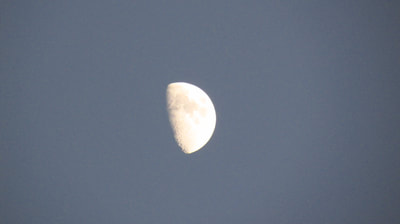|
I did a student observation of the sky for my uni work, focusing on Summer Solstice at Glastonbury Tor. I saw the sunset on the 21st and sunrise on the 22nd. Here is what I discovered through my research, and some of my photos.
Summer solstice is on Thursday, 21 June 2018, 11:07 in Glastonbury. In terms of daylight, this day is 8 hours, 41 minutes longer than on December (Winter) Solstice. Earliest sunrise is on 17 June. Latest sunset is on 25 June. Solstices in Culture Over the centuries, the June solstice has inspired countless festivals, midsummer celebrations and religious holidays. One of the world's oldest evidence of the summer solstice's importance in culture is Stonehenge in England, a megalithic structure which clearly marks the moment of the June solstice. In the Southern Hemisphere, where the June solstice is known as the shortest day of the year, it marks the first day of astronomical winter, but the middle of winter in meteorological terms. Celebrations all day in Glastonbury – dawn at the Tor, midday at the Chalice Well Gardens, and sunset at the Tor Daylength 21st: 16:34:20 – 0.02 seconds longer than the 20th Daylength 22nd: 16:34:17 – 0.03 seconds shorter than 21st = longest day! “Solstice” (Latin: “solstitium”) means sun-stopping. The point on the horizon where the sun appears to rise and set, stops and reverses direction after this day. On the solstice, the sun does not rise precisely in the east, but rises to the north of east and sets to the north of west, meaning it's visible in the sky for a longer period of time. Time after sunset & before sunrise is ‘Civil Twilight’ 21st: 04:08 to 04:55 and 21:29 to 22:16 Civil Twilight As the Earth's atmosphere scatters and reflects much of the Sun's rays, coloring the sky bright yellow and orange, artificial lighting is generally not required in clear weather conditions to carry out most outdoor activities. Only the brightest stars and planets, like Venus and Jupiter, can be seen with the naked eye. Nautical Twilight In clear weather conditions, the horizon is faintly visible during this twilight phase. Many of the brighter stars can also be seen, making it possible to use the position of the stars in relation to the horizon to navigate at sea. This is why it is called nautical twilight. Nautical twilight 21st: after civil twilight 22.16 to 23:28 Nautical twilight 22nd: before civil twilight 02:56 to 4.08 Astronomical Twilight To the naked eye, and especially in areas with light pollution, it may be difficult to distinguish astronomical twilight from night time. Most stars and other celestial objects can be seen during this phase. However, astronomers may be unable to observe some of the fainter stars and galaxies as long as the Sun is less than 18 degrees below the horizon – hence the name of this twilight phase. Astronomical twilight 21st-22nd: 23:29 to 02:56 Today does not get darker than astronomical twilight (after which is night) Twilight Around the Poles At high latitudes and around the summer solstice, the Sun does not move lower than 18° below the horizon, so twilight can last from sunset to sunrise. The area experiencing all-night astronomical twilight around the summer solstice lies between about 48°33′ and 54°33′ North and South. In the northern hemisphere, this roughly correlates with the area between locations just south of the US-Canadian border and Canadian cities like Edmonton, Alberta. In Europe, it covers much of Germany – and the UK apparently! www.timeanddate.com
0 Comments
|










